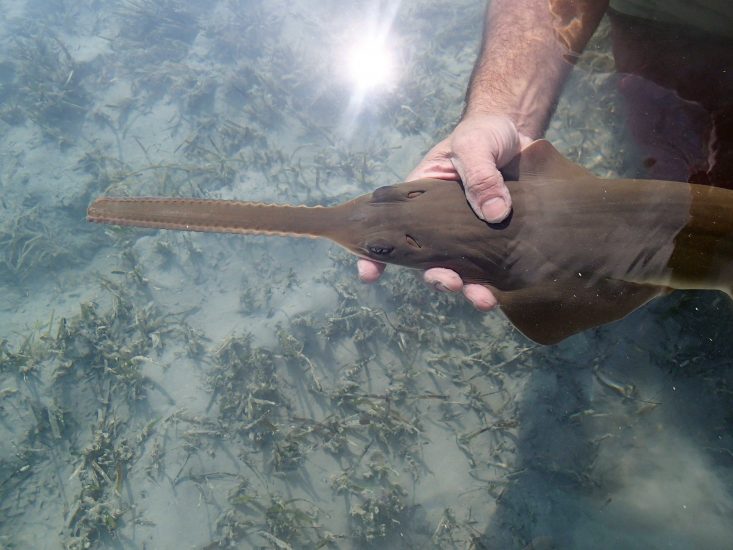Sawfish Births: A breakthrough
The first recorded birth of smalltooth sawfishes Pristis pectinata in the wild is a boon for scientists trying to find out where this species breeds and has its nursery sites, and whether populations in The Bahamas mix with those in Florida, USA.
On 7 December 2016, Dr Dean Grubbs, associate director of research at the Florida State University, and his team caught a female smalltooth sawfish to tag. While doing so, they discovered that she was giving birth. The researchers delivered five pups before releasing the 4.2-metre (14-foot) female to continue giving birth unassisted. Blood and DNA samples were extracted from each of the five pups and PIT tags were inserted. The mother was fitted with an acoustic transmitter and a satellite tag. Analysis of the samples and movement updates from the trackers contribute to the team’s investigation into the level of interaction between populations in The Bahamas and Florida.
Previously, estuaries from Charlotte Harbor, Florida, to Florida Bay in Everglades National Park were the only areas where female smalltooth sawfishes were known to give birth. The confirmation of two pupping areas (Florida and West Andros) is critical to the species’ chances of recovery. The region where the sawfish birth was recorded is part of the Andros West Side National Park, 1.3 million acres (5,260 square kilometres) of protected habitat for smalltooth sawfishes. According to Dr Grubbs, the identification and protection of critical habitats like pupping areas and nurseries is essential to sawfish survival. This knowledge, coupled with more information about genetic exchange between the US and Bahamian populations, can inform adequate conservation management of the species.
Andros Island: a lifeboat for sawfishes?
Sawfishes are rapidly disappearing from our seas, so when a healthy population was discovered off Andros Island in The Bahamas, the area became a very important place. Dean aims to understand this rare community of sawfishes in order to protect them.




